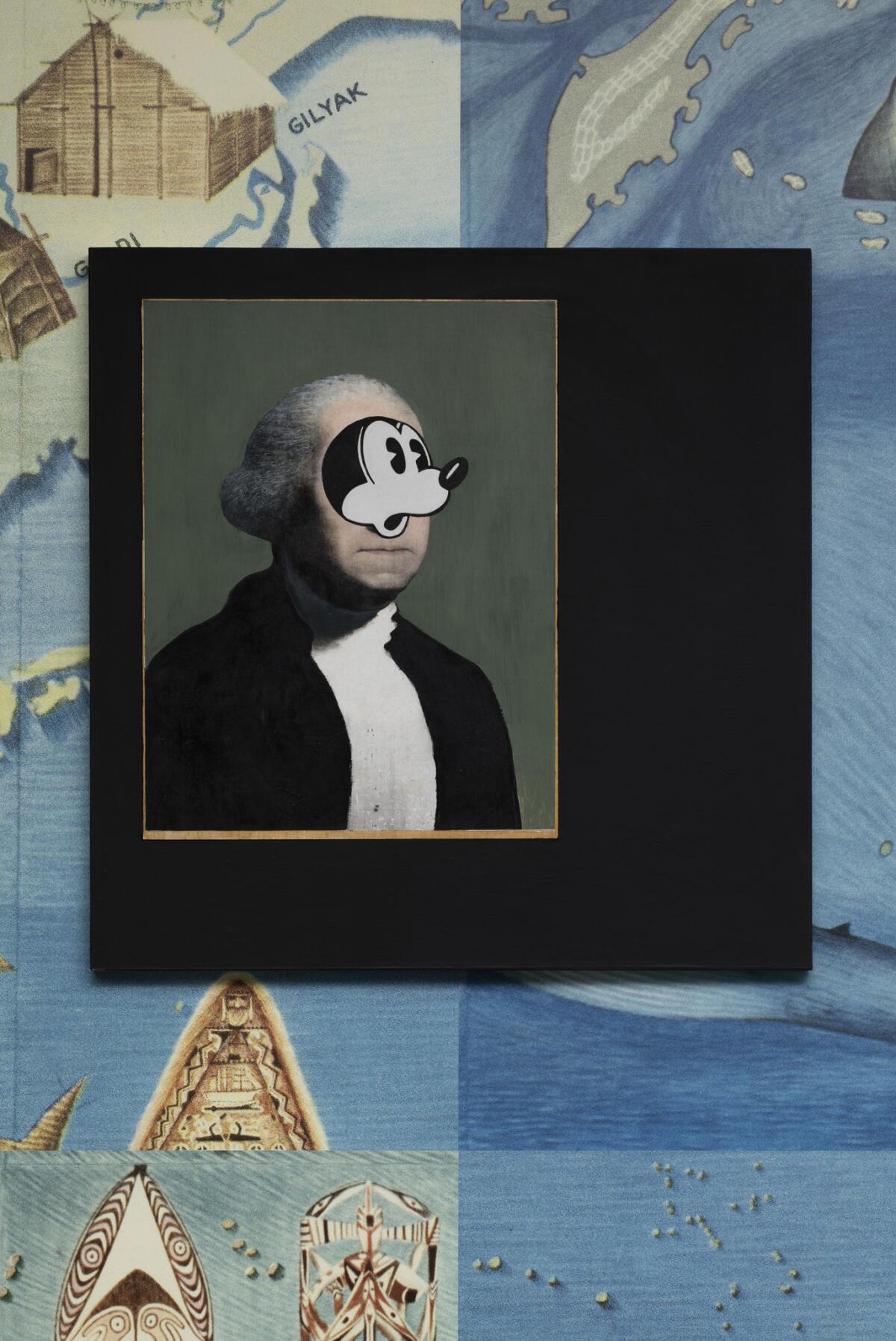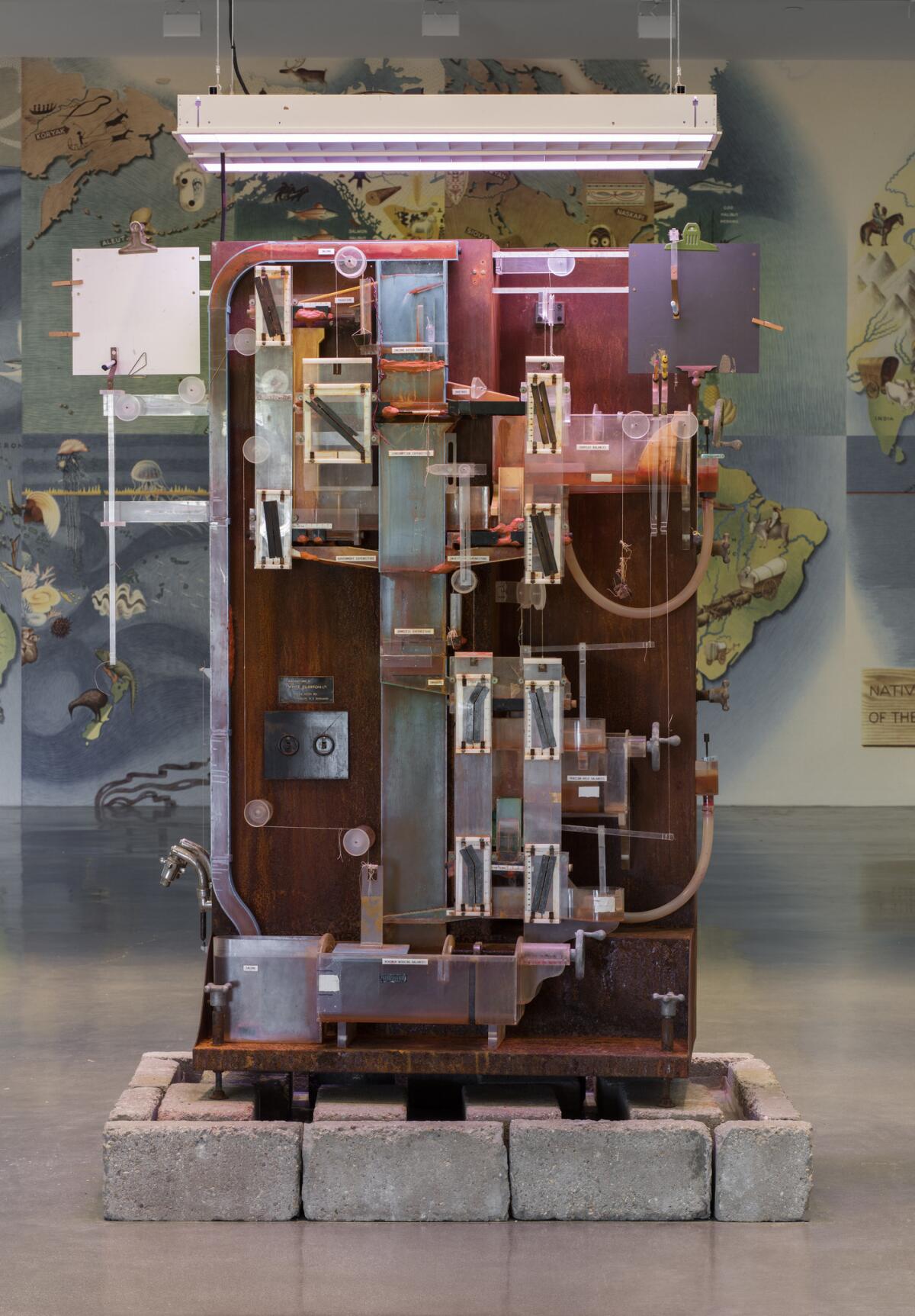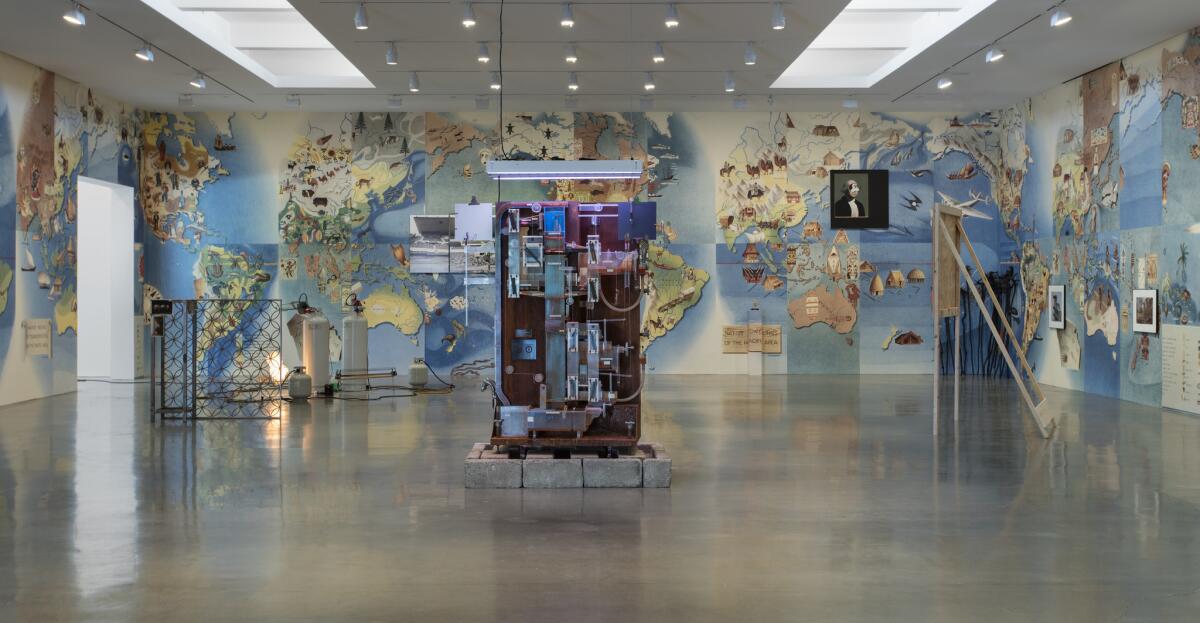Review: The global economy, summed up in these two bubble machines
It’s hard to beat a bubble machine. Two such contraptions by Ariel Schlesinger are a highlight of Regen Projects’ contribution to Pacific Standard Time: LA/LA, the Getty-led exhibitions throughout the region looking at the dialogue between Latino and Latin American art.
Schlesinger, who was born in Jerusalem but now works in Berlin and Mexico City, is also an exemplar of the exhibition’s disregard for conventional definitions, boundaries and borders. The show is a satisfying exploration of the conditions and notions that undergird and upend categories like “Latino” and “Latin American.”
Curated by artists Abraham Cruzvillegas and Gabriel Kuri, the exhibition has the ridiculously long title “Primordial Saber Tararear Proverbiales Sílabas Tonificantes Para Sublevar Tecnocracias Pero Seguir Tenazmente Produciendo Sociedades Tántricas — Pedro Salazar Torres (Partido Socialista Trabajador)” which translates to something about knowing how to subvert technocracies and produce tantric societies. More important, if we turn the title into an acronym, it reads “PST” over and over. I think they are trying to tell us something.
At any rate, the show’s overarching theme might be summed up as transnationalism, for better and for worse.
For the better, of course, is the array of artists and points of view that the show (and the global art market) bring into contact. Japanese artist Shimabuku contributes a tin can playing a samba beat of raindrops; Venezuelan Spanish artist Patricia Esquivias offers a video saga about a Mexican cactus’ journey to Expo ’92 in Seville, and Bob Schalkwijk, who was born in the Netherlands but lives in Mexico, presents striking photos of the demolition of a housing project after it was disastrously damaged by the 1985 Mexico City earthquake.
For the worse: the seamless capitalist landscape explored by many artists in the show. L.A. artist Llyn Foulkes slaps a Mickey Mouse face on a portrait of George Washington, commenting on how consumer media has become our national, indeed global, heritage.

Michael Stevenson’s “The Fountain of Prosperity” is a re-creation of Moniac, an analog computer invented in 1949 that used water flowing through a series of funnels and tanks to model the flow of capital in a national economy. A picture of the original, wall-sized device appears in a spread from Life magazine; Stevenson’s version is decidedly less pristine. It’s running, but rusted, the water pooling in unattractively brackish tanks.

And then there are the bubble machines. Each includes a slim, bubble-blowing arm attached to a large hydrogen tank. The machine blows perfectly spherical soap bubbles, one at a time, that drift down onto a field of buzzing and sparking electrified wire. As each bubble hits the wires, it bursts into flames, an effect that is startling, dramatic and hilarious. It’s hard to avoid metaphoric associations with bubble economies popping and burning all over the world.
Most of these works and many others are presented in a room lined with wallpaper inspired by the world map murals of Mexican artist Miguel Covarrubias. Created for the 1939 Golden Gate International Exposition in San Francisco, these maps presented distinct categories of animals, plants, people, building types and natural resources, indicating their locations around the globe. They are as beautiful as they are reductive, presenting a fantasy of total global knowledge. But Cruzvillegas and Kuri have broken the maps into segments and installed them out of order so that the pieces do not form a seamless image. The result is a literal remapping of divisions once thought to be discrete, but now in question.
Regen Projects, 6750 Santa Monica Blvd., L.A. Through Oct. 28; closed Sundays and Mondays. (310) 276-5424, www.regenprojects.com

SIGN UP for the free Essential Arts & Culture newsletter »
Support coverage of the arts. Share this article.
MORE ART:
The godfather of Chicano art — and the son who's keeping his memory alive
Did you spot the egg-shaped museum cruising L.A.? Next stop: LACMA
Kusama 'Infinity Mirrors' frenzy prompts the Broad to offer 40,000 more tickets
The biggest entertainment stories
Get our big stories about Hollywood, film, television, music, arts, culture and more right in your inbox as soon as they publish.
You may occasionally receive promotional content from the Los Angeles Times.







